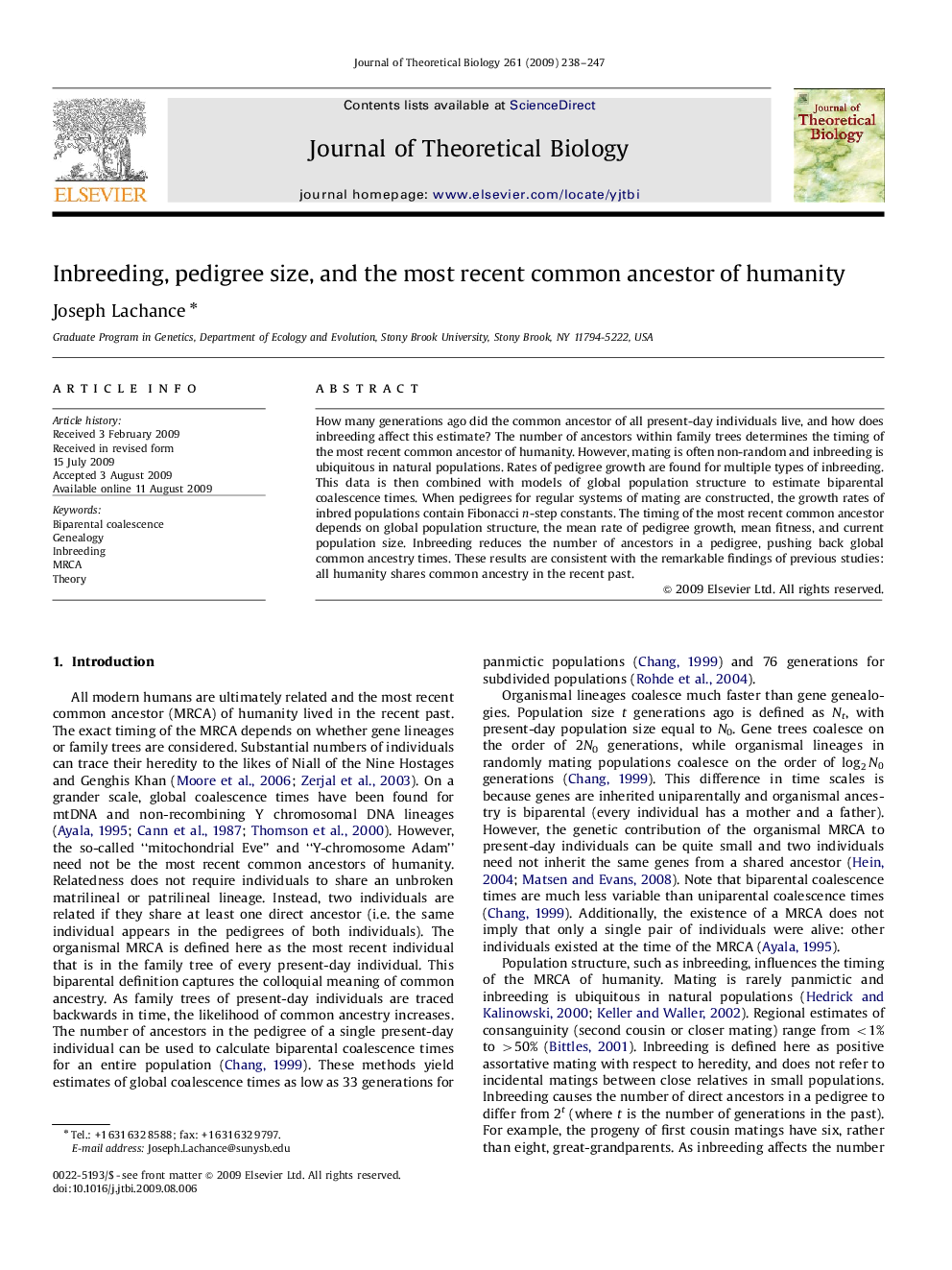| کد مقاله | کد نشریه | سال انتشار | مقاله انگلیسی | نسخه تمام متن |
|---|---|---|---|---|
| 4497783 | 1318950 | 2009 | 10 صفحه PDF | دانلود رایگان |
عنوان انگلیسی مقاله ISI
Inbreeding, pedigree size, and the most recent common ancestor of humanity
دانلود مقاله + سفارش ترجمه
دانلود مقاله ISI انگلیسی
رایگان برای ایرانیان
موضوعات مرتبط
علوم زیستی و بیوفناوری
علوم کشاورزی و بیولوژیک
علوم کشاورزی و بیولوژیک (عمومی)
پیش نمایش صفحه اول مقاله

چکیده انگلیسی
How many generations ago did the common ancestor of all present-day individuals live, and how does inbreeding affect this estimate? The number of ancestors within family trees determines the timing of the most recent common ancestor of humanity. However, mating is often non-random and inbreeding is ubiquitous in natural populations. Rates of pedigree growth are found for multiple types of inbreeding. This data is then combined with models of global population structure to estimate biparental coalescence times. When pedigrees for regular systems of mating are constructed, the growth rates of inbred populations contain Fibonacci n-step constants. The timing of the most recent common ancestor depends on global population structure, the mean rate of pedigree growth, mean fitness, and current population size. Inbreeding reduces the number of ancestors in a pedigree, pushing back global common ancestry times. These results are consistent with the remarkable findings of previous studies: all humanity shares common ancestry in the recent past.
ناشر
Database: Elsevier - ScienceDirect (ساینس دایرکت)
Journal: Journal of Theoretical Biology - Volume 261, Issue 2, 21 November 2009, Pages 238-247
Journal: Journal of Theoretical Biology - Volume 261, Issue 2, 21 November 2009, Pages 238-247
نویسندگان
Joseph Lachance,